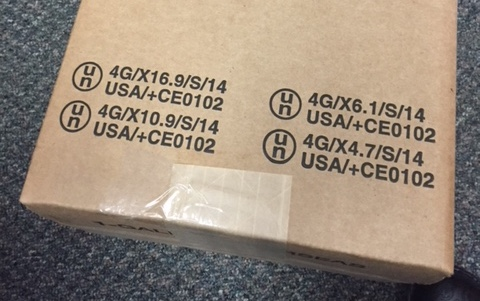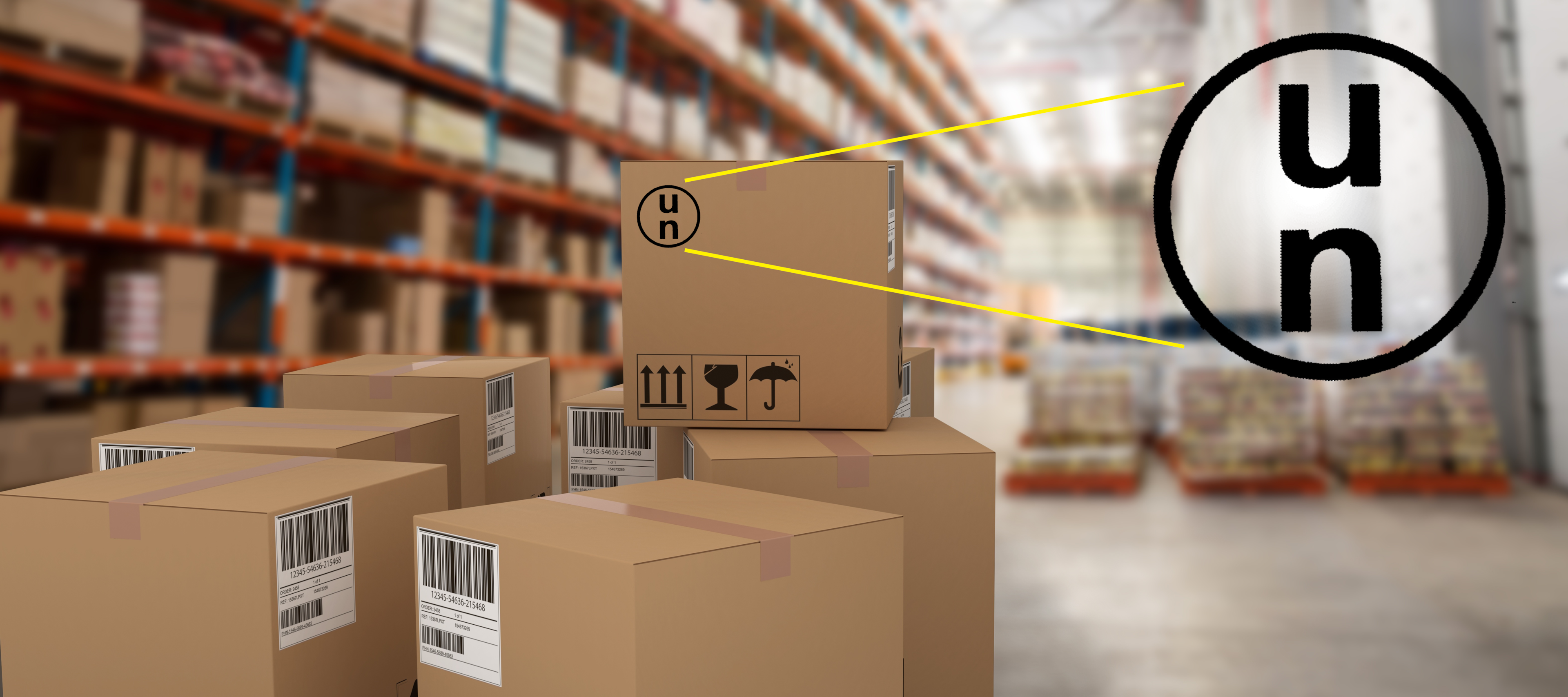
When it comes to transporting hazardous materials, choosing the right packaging is extremely important. If you choose the wrong packaging, it can lead to a hazmat incident, which can put the safety and well-being of people at risk and harm the environment as well. Under the law, UN specification packaging is required for shipping dangerous goods by ground, air, or vessel unless exceptions are applied such as the Limited Quantity Exception. The packaging you choose must have passed all the necessary tests and must be strong and durable enough to withstand the shocks, stresses, and pressure changes throughout the course of the transportation otherwise know as normal condition of transport.
Packaging can be classified as UN-approved packaging only if it passes the following tests, which are designed to test its strength and durability. These include:
- Hydrostatic test
- Leak proof test
- Stack compression test
- Vibration test
- Drop test
Why do UN Ratings Matter?
UN Ratings were developed by the United Nations Sub-committee of Experts on the Transport of Dangerous Goods (TDG Sub-Committee) for the purpose of harmonizing and streamlining domestic as well as international hazmat regulations. These are international standards that can be followed by domestic as well as international hazmat shippers.
Factors to Consider While Choosing Dangerous Goods UN Specification Packaging
The key factors you need to consider while choosing the packaging for dangerous goods include:
- The type and class of dangerous goods to be transported
- Whether the goods to be transported belong to Packing Group I (high danger), II (medium danger), or III (low danger)
- The quantity of goods to be transported
- Whether the package has been tested for the appropriate mode of transport (ground, air, or vessel)
- The manufacturer’s certification stating that the packaging in question has passed all the necessary tests
- Whether it is a bulk or non-bulk shipment
- Dimensions
- Filling limits
- Internal pressure limitations
- Maximum density or specific gravity
Key Elements of UN Markings and UN Specification Packaging
Each UN-approved packaging contains markings or codes that indicate that the package in question has passed all the necessary tests and meets all the required criteria. The key elements of UN markings include:
The United Nations Symbol

The UN symbol is the primary indication that the package in question has been tested certified in accordance with UN standards. The symbol can be in lower case or upper case.
Packaging Identification Code
The packaging identification code specifies the type of packaging, the material it is made of, and the category.
The different types of packagings that can be used for hazardous materials transportation include:
- 1 – Drums
- 2 – Reserved
- 3 – Jerry cans
- 4 – Boxes
- 5 – Bags
- 6 – Composite packaging
The different types of materials that are used to make dangerous goods packagings include:
- A- Steel
- B – Aluminum
- C – Natural wood
- D – Plywood
- F – Reconstructed wood
- G – Fiberboard
- H – Plastic
- L – Textile
- M – Paper
- N – Any metal other than steel or aluminum
- P – Glass, porcelain, or stoneware
If the packaging happens to be a drum, the code will also specify whether it has a closed head (which cannot be removed 1A1) or an open head (which can be removed 1A2). If it happens to be a bag, the code will specify whether it is multi-walled and water-resistant.
Packing Group Level Equivalent
It specifies the Packing Group that the packaging has been tested to. If the code says X, it means the packaging was tested for Packing Group I (high danger). If it says Y, it means the packaging was tested for Packing Group II (medium danger). If it says Z, it means the packaging was tested for Packing Group III (low danger).
- If the packaging was tested for Packing Group III, it can only be used to store and transport materials that come under that particular group.
- If the packaging was tested for Packing Group II, it can be used to store and transport materials that come under Group II as well as Group III.
- If the package was tested for Packing Group I, it can be used to store and transport materials that come under all three groups.
Gross Mass or Specific Gravity
It specifies the maximum gross mass the completed package was tested for or the maximum specific gravity in the case of liquids.
Hydrostatic Pressure or S
For single and composite packaging that is designed to contain liquids and for combination packaging that is designed to contain all kinds of materials, the marking will include the letter S.
For single and composite packaging that is designed to contain liquids, the marking will include the hydrostatic pressure.
Year and Location of Manufacture
It specifies the year and the country in which the packaging was manufactured.
Manufacture Code
It provides information about the packaging manufacturer or the certifying agency.
Learn About UN Specification Packaging Requirements with Hazmat University’s Online Training Courses

Hazmat packaging requirements can differ greatly – depending on the material being transported, its hazard classification, its quantity, and a wide range of other factors. What is suitable for flammable liquids might not be suitable for corrosive materials, as the substance being transported might react differently to different types of materials. Access a user friendly UN specification guide here to learn more.
Hazmat employees in the hazmat transportation industry are required to know the UN packaging standards and the various federal and international regulations regarding hazmat packaging so that they can choose the right packaging for the right material and transport it safely.
At Hazmat University, we offer accurate and latest online hazmat training courses that cover a wide range of information – including packaging requirements – and can make it easier for you to comply with all the necessary regulations.
We offer training courses for hazmat handling and shipping by ground, air, as well as vessel. We also offer multi-modal training courses that cover all the relevant regulatory requirements from Title 49 of the Code of Federal Regulations (49 CFR), the International Air Transport Association (IATA), the International Civil Aviation Organization (ICAO), and the International Maritime Dangerous Goods (IMDG) Code.
Our online hazmat training programs are designed to help you learn and absorb information at your own pace. Our one-of-a-kind Dynamic Learning Environment makes online training a breeze. No matter where you are, you can sign up for our training program, complete it at your own pace, and get certified. Hazmat training has never been this easy!
Call us today at 844-769-2815 or get in touch with us online to place your order or to explore what kind of initial or recurrent online hazmat training course may be appropriate for your career needs.
BUREAU OF DANGEROUS GOODS
Training • Technology • Consulting
Be Confident. Be Competent. Be Compliant. ®
We Never Stop Learning 🍎
www.ShipHazmat.net